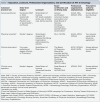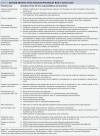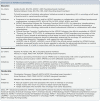The Advanced Practitioner and Collaborative Practice in Oncology
- PMID: 27648343
- PMCID: PMC5017544
The Advanced Practitioner and Collaborative Practice in Oncology
Figures









References
-
- Commission on Cancer.(2012)Cancer Program Standards 2012: Ensuring Patient-Centered Care. American College of Surgeons, Chicago, IL. 2012 Retrieved from www.facs.org.
-
- Hinkel Jennifer M, Vandergrift Jonathan L, Perkel Sara J, Waldinger Marcy B, Levy William, Stewart F Marc. Practice and productivity of physician assistants and nurse practitioners in outpatient oncology clinics at national comprehensive cancer network institutions. Journal of oncology practice / American Society of Clinical Oncology. 2010;6:182–187. - PMC - PubMed
-
- Institute of Medicine. (2000), editor. Washington, DC:: The National Academies Press.; 2000. Improving Palliative Care for Cancer.
Publication types
LinkOut - more resources
Full Text Sources
